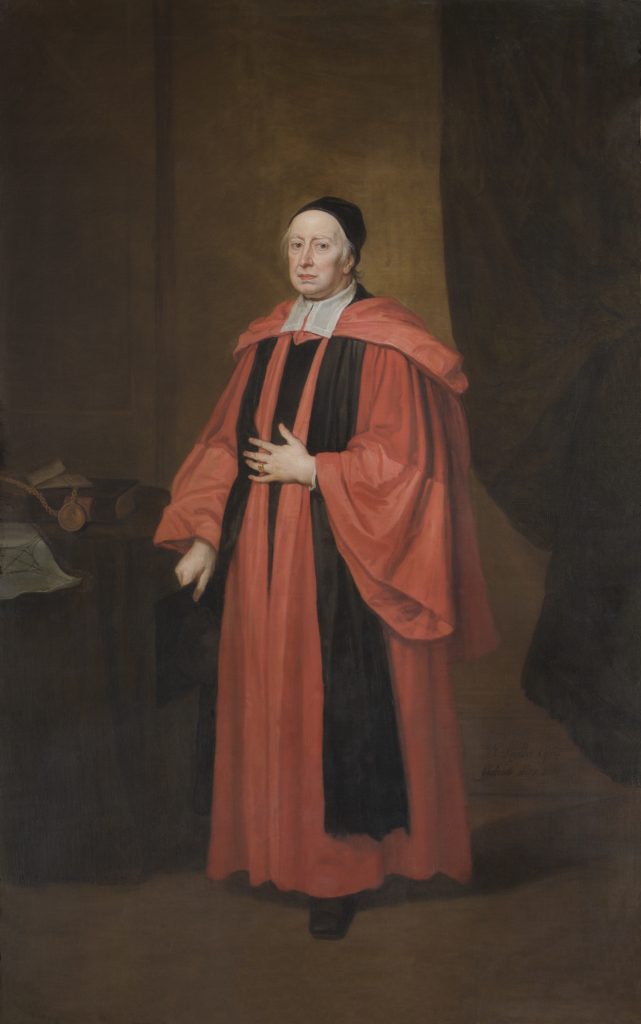Case Study 10: John Wallis by Godfrey Kneller, 1701
This study investigates the sitter’s occupation.
In this case an authenticated portrait of the celebrated mathematician and cryptographer, John Wallis, included important references to his work, but their significance to modern viewers had become obscure.
On the table beside Wallis is a small collection of objects including a paper illustrating an algebraic diagram, a book, a letter, a large gold medal and chain. Unlocking the precise meaning of this still life depended on the scholarly expertize, and generous assistance, of historians of science.
The diagram (which can be seen under magnification on the Oxford Portraits website) was identified by a historian of mathematics as an accurate copy by Kneller of a diagram reproduced in Wallis’s Opera Mathematica, 3 vols (1699), II, Chapter 93, p.375. There it illustrates his account of the relation between the ellipse and the hyperbola.
The size and brown binding of this work, of which volume two bears the short title ‘Algebra’ inscribed in gold on red leather on the spine, correspond to that on the volume also seen on the table beside Wallis. The title is obscured, however, by the gold medal placed in front of it.
Resting on top of the medal’s gold chain is a folded letter. The medal and chain were awarded to Wallis in 1691 by Frederick III, Elector of Brandenburg (from 1701 Frederick I, King in Prussia), for his services in deciphering intercepted correspondence relating to actions by Louis XIV in Poland which potentially threatened the security of the German state.
In this example, international scholarly expertize and a magnification tool shed light on the attributes of an internationally renowned scholar.
For further details see:
http://www.odl.ox.ac.uk/oxfordportraits

